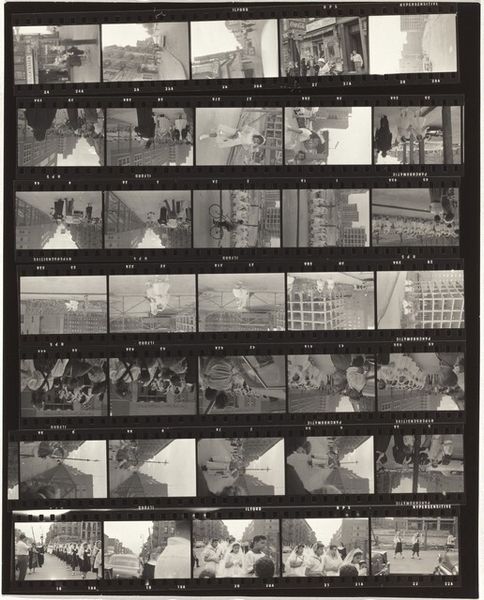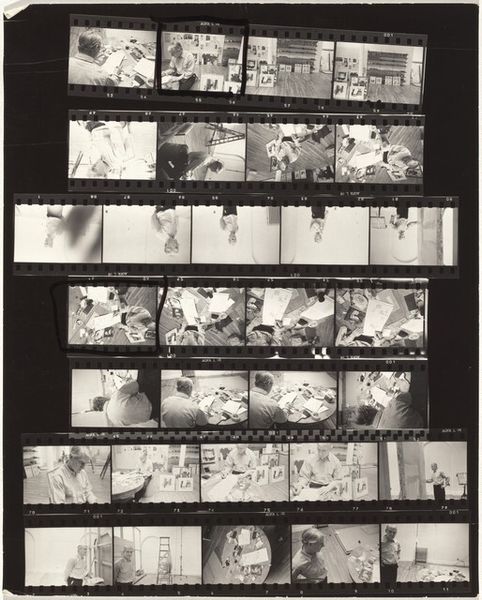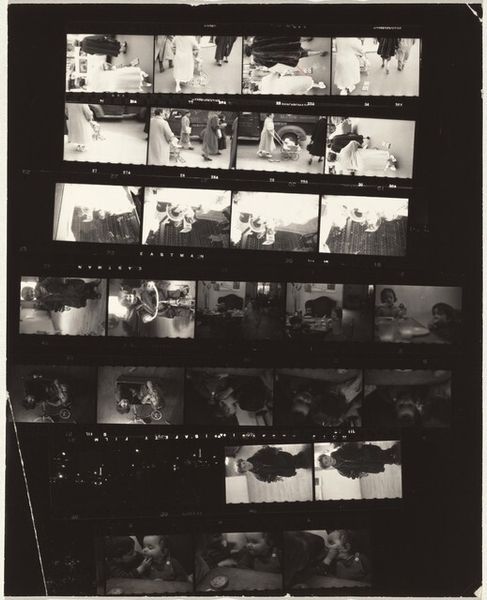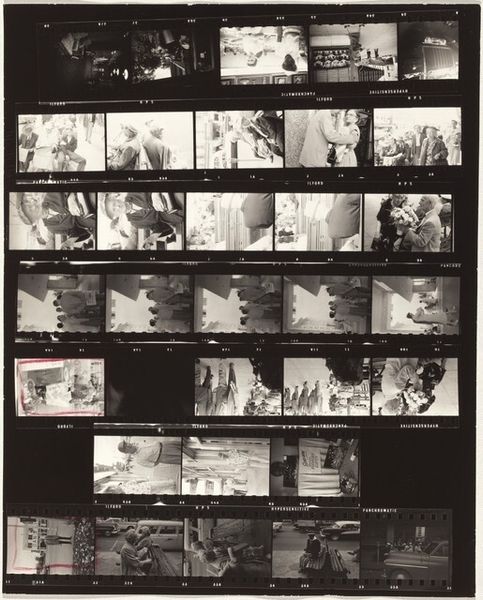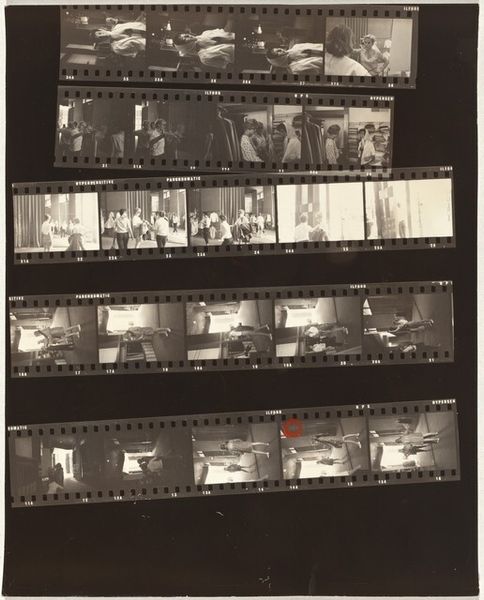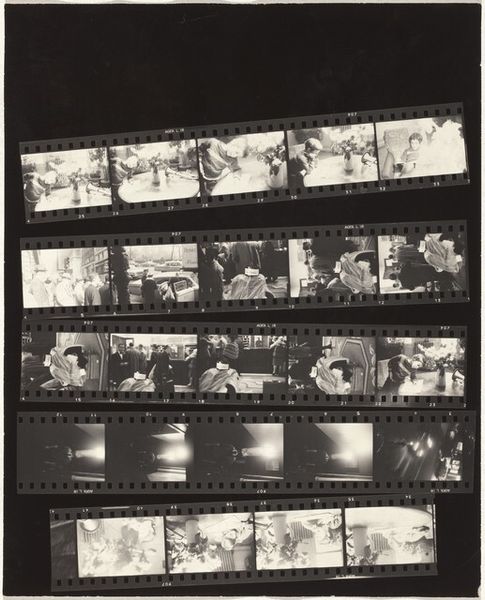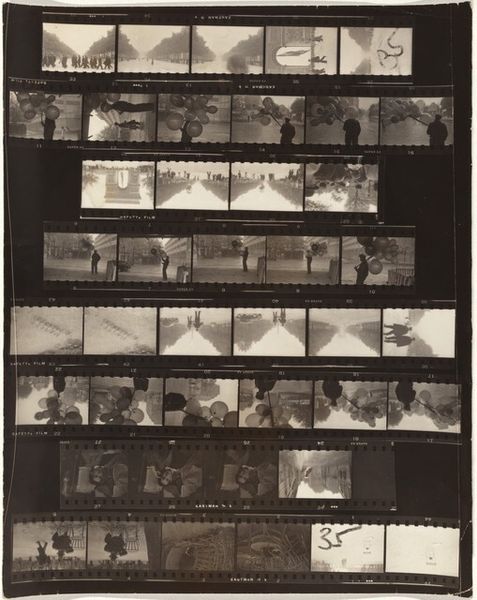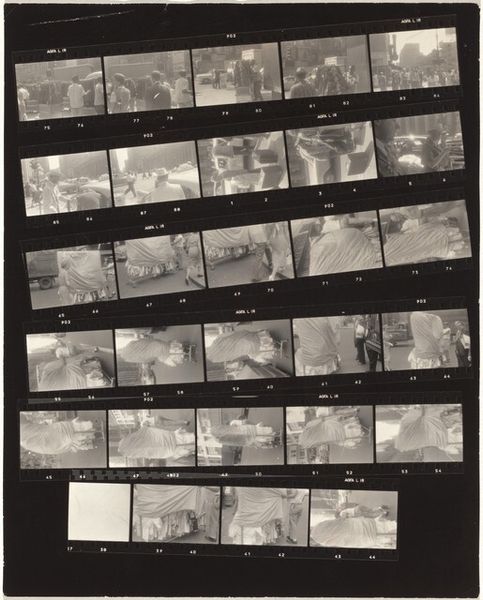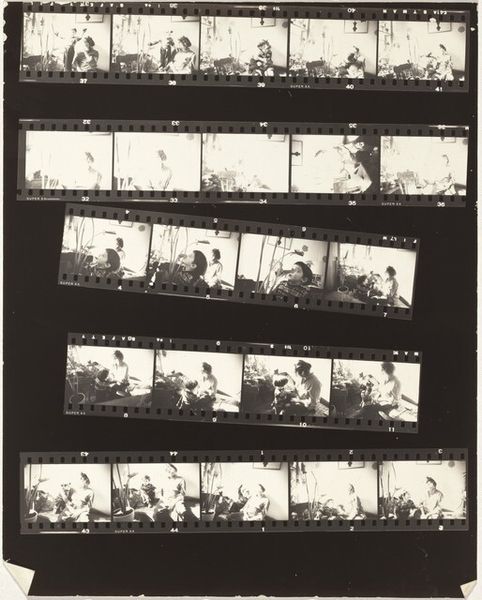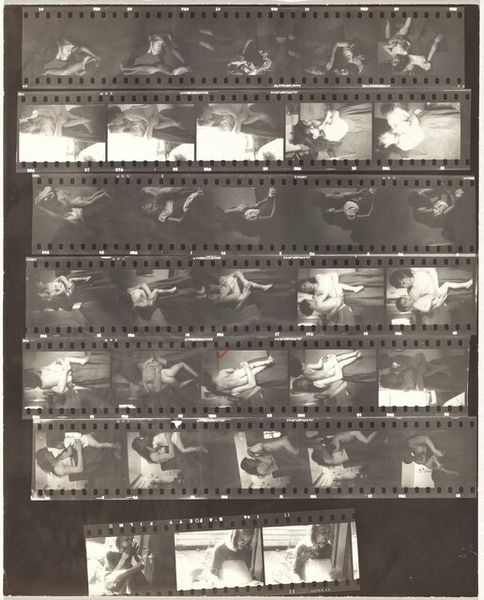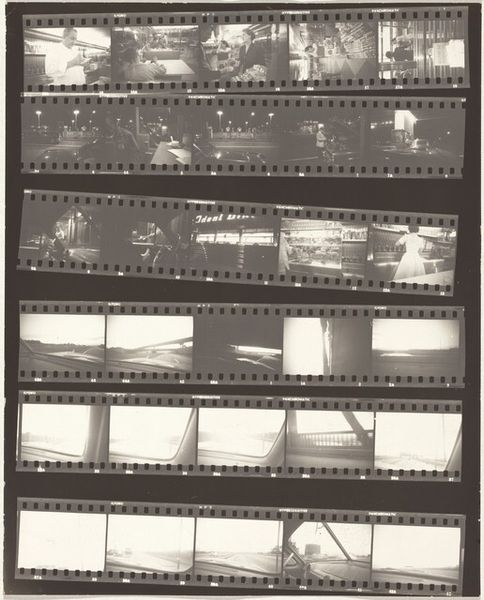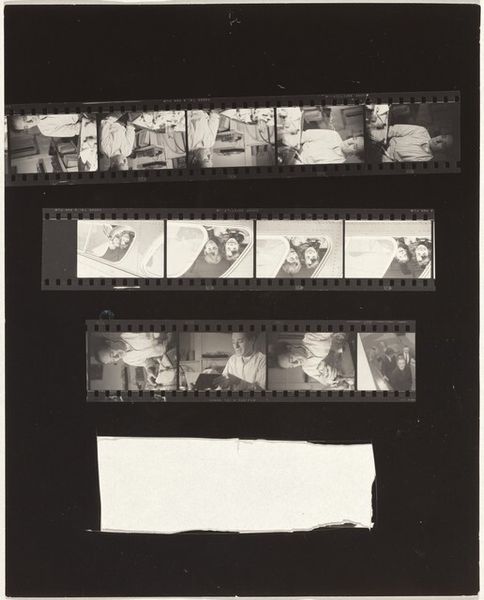
photography, gelatin-silver-print
#
abstract-expressionism
#
photography
#
gelatin-silver-print
#
monochrome photography
#
monochrome
Dimensions: overall: 25.3 x 20.2 cm (9 15/16 x 7 15/16 in.)
Copyright: National Gallery of Art: CC0 1.0
Curator: Let's turn our attention to "Mary's sculpture no number" by Robert Frank, created in 1957. It's a gelatin-silver print showing multiple frames of a filmstrip. Editor: My first impression is one of fragmented observation, like catching glimpses of a process unfolding. The monochrome tones give it a raw, almost documentary feel. Curator: Precisely. The image presents us with the act of artistic creation itself, likely showing different angles and stages of the featured sculpture's construction. We're not presented with the final artwork as a monolith, but rather its becoming. It seems very intimate. Editor: It does. And looking closely, you see the strip itself—the texture and even dust of the material present. It draws attention to the tangible side of image-making, far beyond the finished product, which aligns perfectly with Frank's general disregard for clean or idealized representations. He lets you see the grit. Curator: In the 1950s, Abstract Expressionism was still reigning, focusing heavily on the artist's interiority, his struggles and feelings. In contrast, this piece seems to turn outwards to the subject that is being depicted by the artist. What statement is he trying to convey? Editor: Perhaps it's a gesture towards demystifying the artistic process. The film strip format denies us the singular, heroic image, instead offering multiple perspectives. What matters here isn’t the "perfect shot", it's that raw look at all the pieces and perspectives being presented to a work. Curator: Considering Frank's other works, such as his photography project "The Americans", could we interpret the work of constructing a sculpture here as a subtle metaphor for building an American identity in a shifting post-war era? Are we building towards a complete idea or breaking the mold that's been built for us? Editor: Absolutely. He seems to be examining how our understanding and memory are constructed. Not with one statement but several points that inform that very identity we're meant to know. Curator: Ultimately, "Mary's sculpture no number" seems to challenge viewers to engage with the dynamic, imperfect nature of both art-making and the society around them. Editor: It really opens us up to understanding what art means, and what artists do beyond the product they put out. The humanity is always there.
Comments
No comments
Be the first to comment and join the conversation on the ultimate creative platform.

